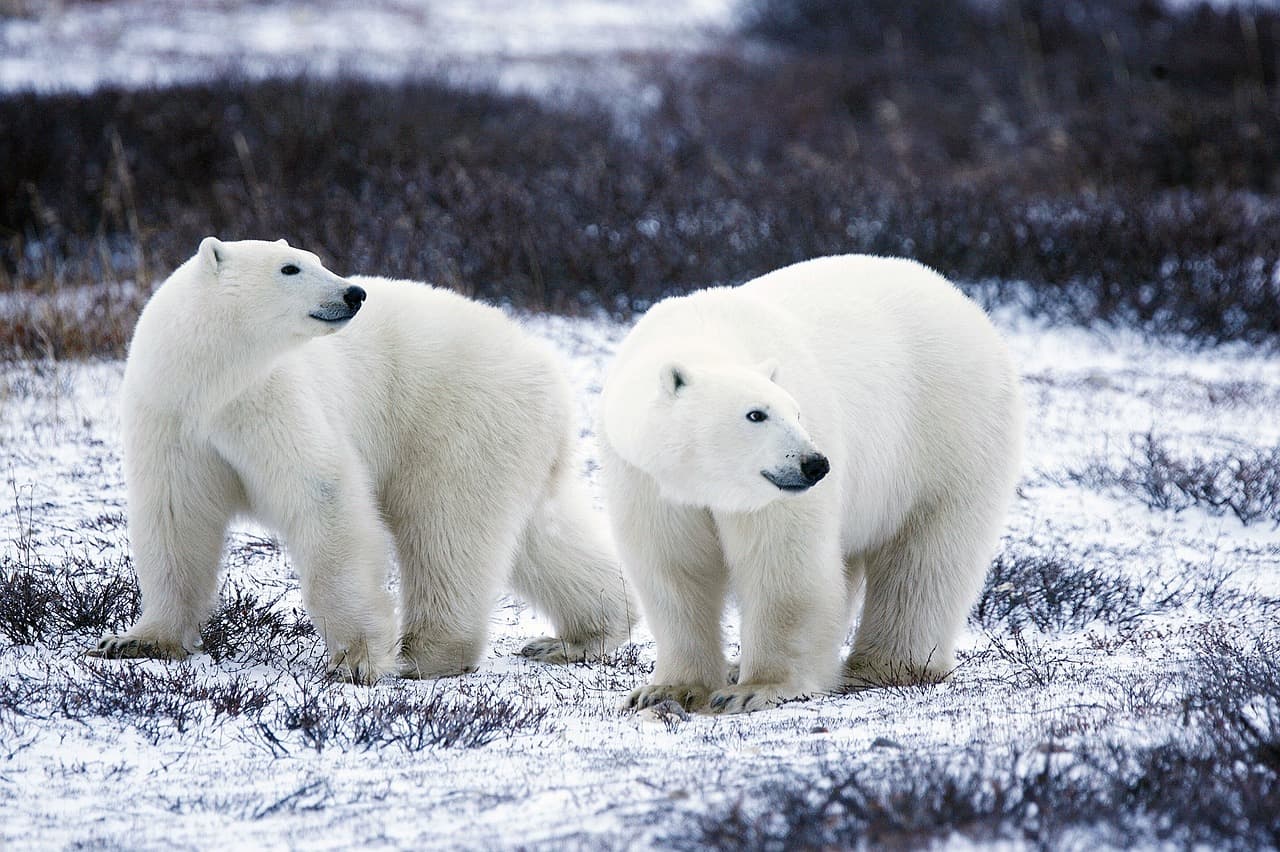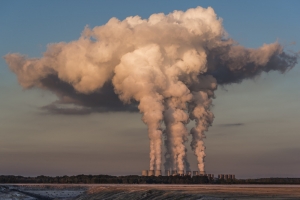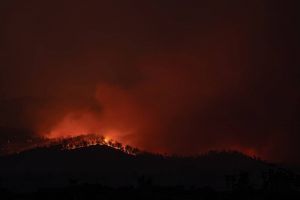The polar bear; the biggest predator on the whole planet! It has a big white fur and lives in the arctic, where it is very cold. Its name in Latin means 'bear of the sea.' The polar bear spends most of his time in the water or on the ice floe.
1. Polar bear description
With its massive body and long neck, the polar bear is the largest terrestrial carnivore. The adults' white fur appears cream to yellow against the dazzling whiteness of their habitat, the Arctic ice floe. Adult males are 240 to 260 cm in length and usually weigh 400 to 600 kg, although they can weigh up to 800 kg, almost as much as a small car. They do not reach their maximum size until around the age of eight to ten. Adult females are about half the size of males and reach their maximum size around the age of five or six. Most then weigh 150 to 250 kg. Pregnant females can weigh 400 to 500 kg just before entering their farrowing den in the fall.The polar bear has a longer body than the brown bear; his neck and skull are also longer, but his ears are smaller. Instead of having the "domed" or concave profile that characterizes the brown bear, the polar bear has a more prominent snout or "Roman profile." Its canines are wide, and the grinding surfaces of its jugal teeth are irregular, which testifies to its adaptation to a meat diet. Its claws are brownish in color, short, fairly straight, very pointed, and not retractable.
2. Polar bear habitat
The polar bear lives exclusively in the polar regions of the Arctic Circle, on the ice sheets (continental glaciers) but also and more mainly on the ice floe, of which it surveys the immensity. It is found in northern Alaska, the Canadian Arctic Archipelago, Greenland, the Svalbard archipelago (Spitzbergen), on François Joseph land, and north-central Siberia. However, the extent of its territory is limited by the availability of ice sheets drifting on the seas.Related: Safe environment and human contact with animals
3. Polar bear food and reproduction
Seals are the main food source for polar bears, and their diet depends almost entirely on meat. If food supplies from seals are available, polar bears prefer feeding on seals only. This high-calorie meal provides the polar bears' needs of fat, which maintains their health and helps them maintain the body temperature. The polar bear needs about 2 kg of fat per day, which provides about 121 pounds of seals meat and supplies the polar bear about eight days of energy, and if the polar bears do not find enough seals, they can eat fish, rodents, birds, and berries.A female polar bear usually gives birth during November or December after an eight-month pregnancy period. A female polar bear prepares for the birth by digging a snow cave in which to place her babies. This cave is called the maternity cave. The female polar bear usually gives birth to twins despite that there have been cases where the female gives birth to a single baby or a triplet twin. The newborn at birth weighs about half a kilogram but grows very quickly, and the cubs fully nurture on their mothers for warm and creamy milk that contains 36 percent fat. By the spring, the cubs go out of the maternity cave to explore their surroundings as they become fully mature at the age of two, and the polar bear’s life span ranges from 15 to 20 years.
4. Polar bear, an endangered species
The polar bear is falling victim to the melting of the ice floe in the Arctic Ocean to the point that it is now on the red list of endangered species. This animal has a metabolism perfectly adapted to life on ice, but the polar bear could not survive long without ice.According to the studies carried out, there is much to fear that this vulnerable species will disappear completely in less than 100 years. The estimates are alarming: of the 22,000 polar bears currently listed, 14,000 of them may even have disappeared in about 30 years.Rising temperatures have a negative impact on seals, which are part of the diet for polar bears with longer fasting periods. Also, the melting of the ice floe due to global warming is leading to the permanent disappearance of many sections of ice. All of these bears' shelters are at risk and are counted less and less. There is, therefore, a change in their lifestyle. Thus, some polar bears get closer to indigenous and local communities, others devour their congeners, and others finally die drowned in exhaustion from swimming in search of ice sheets.
5. What should you do to save the polar bear?
In the WWF polar bear report, there is a different proposition for saving the polar bear. Polar bear countries need to work together better and create laws for the North Pole. You have to think about hunting, trading, and drilling for gas and oil.Polar bear countries cannot stop climate change alone. But it is important to make their voices heard in the whole world! The big world leaders must clearly reduce their greenhouse gas emissions to save the polar bear!
- Preserving the environment and its psychology
- Coca-cola recycling, a second life for each bottle
- The impact of Covid-19 on the environment, economy and social life
Originally published on Live Positively.






